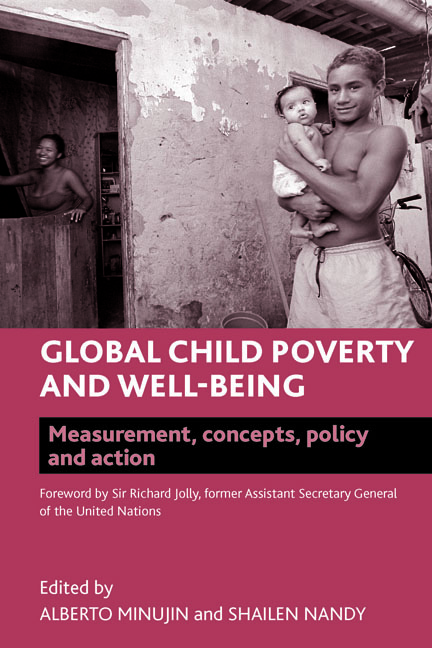thirteen - Multidimensional child poverty in Vietnam
Published online by Cambridge University Press: 07 September 2022
Summary
Introduction
The development and use of child poverty approaches has received increasing attention over the last decade resulting from the widespread acknowledgement that children deserve a child-focused perspective in the development and poverty reduction process worldwide (see, for example, Gordon et al, 2003; Minujin et al, 2005). This increased acknowledgement can be attributed to a number of reasons (see Gordon et al, 2003; Waddington, 2004; Minujin et al, 2005). The dependence on parents, household and community for the distribution of basic needs puts children at a higher risk of poverty and makes their situation less transparent (White et al, 2003). Moreover, poverty often manifests itself as a vicious circle, causing children to be trapped in poverty from birth onwards (Corak, 2006a), and children have different basic needs than adults (Waddington, 2004). Child-focused poverty approaches are crucial to account for these issues and to provide detailed information at the level of the individual child. A generally accepted definition and measurement method of child poverty is an important tool for both academics and policy makers. It provides an opportunity to gain insight into the poverty status of children but also gives the possibility to formulate and monitor sound poverty reduction objectives, strategies and policies (see, for example, Ben-Arieh, 2000; Corak, 2006b).
Since the Doi Moi (renovation) reform policies came into place in the late 1980s, Vietnam has experienced a period of outstanding economic growth, accompanied by a large reduction in poverty. Central planning was replaced by free market-oriented economic policies, inducing great changes in the agricultural sector, private business and employment development, foreign trade and social sector policies, creating business and entrepreneurial opportunities for Vietnamese people as well as for foreigners. The reforms proved to be greatly beneficial for Vietnam's economic performance, with average economic growth rates of 6.9% from 1988 to 1994 and 7.4% from 1994 to 2000 (Glewwe, 2004). Furthermore, monetary poverty was also substantially reduced, from 58% in 1993 to 19.5% in 2004 (VASS, 2006). These poverty figures can be further disaggregated for various demographic groups and are often presented by region, gender and ethnicity. However, representation per age group is less common and, as a consequence, little is known about the state of child poverty in Vietnam.
- Type
- Chapter
- Information
- Global Child Poverty and Well-BeingMeasurement, Concepts, Policy and Action, pp. 307 - 324Publisher: Bristol University PressPrint publication year: 2012



